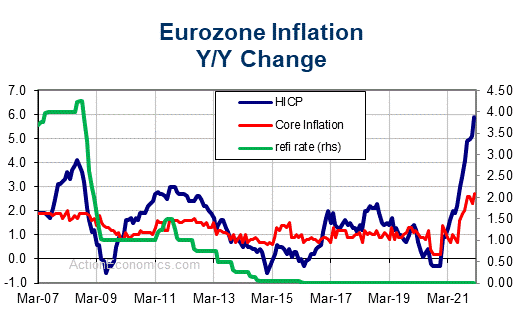“Low-for-longer” seems to have become an almost universal mantra for central banks, but one that leaves markets disappointed and pressing for more, especially as growth remains sluggish and inflation subdued.
However, the ECB’s monetary policy is already extremely accommodative, especially with a new round of TLTRO loans still in the pipeline. Like other central banks the ECB is eager to assure markets that it remains ready to act if necessary. But we would likely have to see another major crisis, rather than the current sluggish growth scenario before President Draghi consider purchases of stocks and shares under a new QE program. And “Super-Mario” will not be around for much longer.
Part of the apparent mixed feelings on current central bank signals may reflect the fact that “low-for-longer” is not a very nice message and that sluggish, but positive growth makes for less eye-catching headlines than predictions of recession and another ECB U-turn that would see the central bank not only re-starting QE, but also change the toolbox and include purchases of stocks in the potential spending spree.
Draghi, when quizzed about the possibility of these steps at the last press conference stressed that this hasn’t been discussed at the governing council level so far. Instead, he highlighted that the current forward guidance is flexible and that each time the ECB pushes out the timing of the first rate hike, it also extends the re-investment schedule further into the future and thus assures that the central bank’s balance sheet will not shrink before the recovery and inflation are on the right path.

At the same time though, Draghi was clearly eager to signal that the ECB is ready to act again if necessary and will consider all possible options.
For now then and for the foreseeable future the main message remains rates will be “lower-for-longer”, as will overall financing conditions, with the ECB’s balance sheet set to remain extended for well after the timing of the first rate hike, which it is expected to be pushed further back into 2020 at the next meeting.
Clearly at the current juncture and with so many variables another doomsday scenario and major crisis cannot be fully ruled out, which leaves the ECB committed to step in again and implement additional measures if necessary. This also includes another round of QE, possibly even purchases of shares and equities, but clearly that is not a central scenario and not even a very likely one.In any case it is highly unlikely to become an issue before Draghi leaves office at the end of October this year.
On the other hand, it will also become important to keep an eye on the possible side effects of the ultra-lose monetary policy stance and the potential risks that could be building in the financial sector.
Supporting lending is one thing, fostering unsustainable lending and ever riskier investments another, especially in the context of rising property prices. A survey of academics conducted by the Bank of Finland recently reported that experts suggest that raising lenders’ minimum capital requirements to 15% of their total assets would reduce the likelihood of a banking crisis without causing any significant impact on economic activity.
With that in mind it seems some change in perspective at the ECB within a wider overhaul of monetary policy settings may not be such a bad thing in the medium term.
Click here to access the Economic Calendar
Andria Pichidi
Market Analyst
Disclaimer: This material is provided as a general marketing communication for information purposes only and does not constitute an independent investment research. Nothing in this communication contains, or should be considered as containing, an investment advice or an investment recommendation or a solicitation for the purpose of buying or selling of any financial instrument. All information provided is gathered from reputable sources and any information containing an indication of past performance is not a guarantee or reliable indicator of future performance. Users acknowledge that any investment in FX and CFDs products is characterized by a certain degree of uncertainty and that any investment of this nature involves a high level of risk for which the users are solely responsible and liable. We assume no liability for any loss arising from any investment made based on the information provided in this communication. This communication must not be reproduced or further distributed without our prior written permission.



















